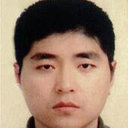Case-control study of risk factors of myelodysplastic syndromes according to World Health Organization classification in a Chinese population.
Λέξεις-κλειδιά
Αφηρημένη
Risk factors of mydelodysplastic syndromes (MDS) remain largely unknown. We conducted a hospital-based case-control study consisting of 403 newly diagnosed MDS patients according to World Health Organization classification and 806 individually gender and age-matched patient controls from 27 major hospitals in Shanghai, China, to examine relation of lifestyle, environmental, and occupational factors to risk of MDS. The study showed that all MDS (all subtypes combined) risk factors included anti tuberculosis drugs [odds ratio (OR)(adj) = 3.15; 95% confidence interval (CI) = 1.22-8.12] as an independent risk factor, benzene (OR(adj) = 3.73; 95% CI = 1.32-10.51), hair dye use (OR = 1.46; 95% CI = 1.03-2.07), new building and renovations (OR = 1.69; 95% CI = 1.11-2.00), pesticides (OR = 2.16; 95% CI = 1.22-3.82), and herbicides (OR = 5.33; 95% CI = 1.41-20.10) as relative risk factors. Risk factors of MDS subtype refractory cytopenia with multiple dysplasia (RCMD) were benzene (OR(adj) = 5.99; 95% CI = 1.19-30.16) and gasoline (OR(adj) = 11.44; 95% CI = 1.31-100.03) as independent risk factors, and traditional Chinese medicines (OR = 2.17; 95% CI = 1.15-4.07), pesticides (OR = 2.92; 95% CI = 1.37-6.25), and herbicides (OR = 12.00; 95% CI = 1.44-99.67) as relative risk factors. Smoking tobacco was significantly associated with refractory anemia with excess of blasts (RAEB) (OR(adj) = 2.43; 95% CI = 1.02-5.77). Education is shown as an independent protective factor against all MDS (OR(adj) = 0.90; 95% CI = 0.83-0.99) and RCMD (OR(adj) = 0.89; 95% CI = 0.79-0.99). These findings suggest that multiple modifiable behavioral, environmental, and occupational factors play a role in MDS etiology, and various MDS subtypes may have different susceptibility.



